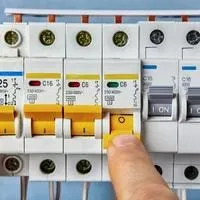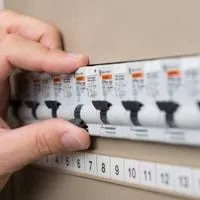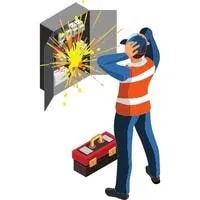Why does my breaker keep tripping with nothing plugged in. If you suspect your house’s breaker is tripping and you have checked the circuit boards, nothing is plugged in. The situation can occur to anyone and make someone worried.
The electricity is not friendly at all and can make a lot of damage. So these kinds of issues must get resolved at the time when they appear or the time when you notice them.
But usually, the circuit breaker can prevent most of the damages and cut off the power when they suspect any issue. Periodically tripping is not a severe issue, but a circuit breaker that keeps tripping must have something to fix.
If you want to know why my breaker keeps tripping with nothing plugged in and you want to fix it, then we can help you with our instructions. So, here we go.
A Guide Why does my breaker keep tripping with nothing plugged in
If you are facing the issue of a keeps tripping a circuit breaker even though there is nothing plugged in, then there must be some reasons that are creating the issue of circuit breaker tripping.
There might be something plugged in, creating an issue you may not have noticed. A weary wire triggering the breaker for tripping, there could be a ground issue. An overload of electricity may also generate the tripping issue.
Troubleshooting Circuit Breaker Tripping Issue
If you want to fix the tripping issue of your circuit breaker, then you may follow the guideline mentioned below.
But before going to start the procedure, you must ensure that there is no plugged-in device in the outlet.
Issue. Overloading
The first issue towards we want to draw your attention to is overloading. The overloading issue may occur if many devices are being used at the same time.
You can assume your kitchen has different devices like an oven and also placed a toaster, air fryer, or blender along the over. The little machines contain a 20 amps circuit.
But if you run 2 or more appliances at the same time, it may consume more than 20 amps. As a consequence, it may lead to overloading and generate heat. The circuit breaker opens the circuit to control the situation of overheating.
Solution
So, Firstly you must check the label of the circuit breaker and see which area is maintained by the following circuit breaker. Go to that section and remove the power cords you see plugged in.
Please get back to the breaker and see whether it stops tripping. If the issue persists, it indicates that the overloading is not the issue, so you may simply go to the next step.
But if you find the breaker stops tripping, you must plug the appliances one by one. You have to examine the breaker after plugging in one appliance. You may think the circuit meets its limit when it starts tripping again.
TIP:
If the overloading is the culprit, you may prevent the issue by segmenting the devices on the other circuits to maintain the balance.
Issue Short Circuits
To tackle the electricity issue, you must know how the power runs in a circuit. A circuit contains three wires hot wire, a neutral wire, and a ground wire.
When you turn on a switch, the power flows from the hot wire toward the appliance and then turns back to the panel through the neutral wire.
A short circuit occurs when a hot wire meets with any other wire. And consequently, a short circuit may increase the volts of electricity more than it is used by the electric devices, which is not safe at all.
Ground Issue
Another type of short circuit is a ground fault. In the following issue, a hot or active wire meets with a ground cable or nonelectrical part of a device or a circuit.
The interaction may result in maximum power flowing from the circuit breaker. The following situation may cause the issue of circuit breaker tripping.
Solution:
When an active cable interacts with the casing, short circuits or ground issues usually appear in electrical appliances or devices.
To fix the tripping issue, you need to check the plugged appliance that you have unplugged in the previous method and suggest to attach in another area for a balanced load.
If the appliance triggers the other circuit tripping, you must immediately remove the cord from the outlet. Don’t plug it back in until it can’t be fixed or replaced.
But if the tripping appears without overloading or plugging, you need to contact a professional as the issue indicates a problematic circuit.
Don’t try to fix the open circuit, as it may result in massive damage. A short circuit may also lead to catching fire. Wait for a pro electrician to repair the short circuit issue.
Final Thoughts
We are sure that following the guideline will able you to inspect the issue of circuit breaker tripping even if there is no appliance plugged in.
The following article only shares the instructions that are safe and will not be harmful. But if there is an issue with the open circuit, don’t try to cope with it. Call an electrician as a safe step for you as well as your home.
Related Guides


